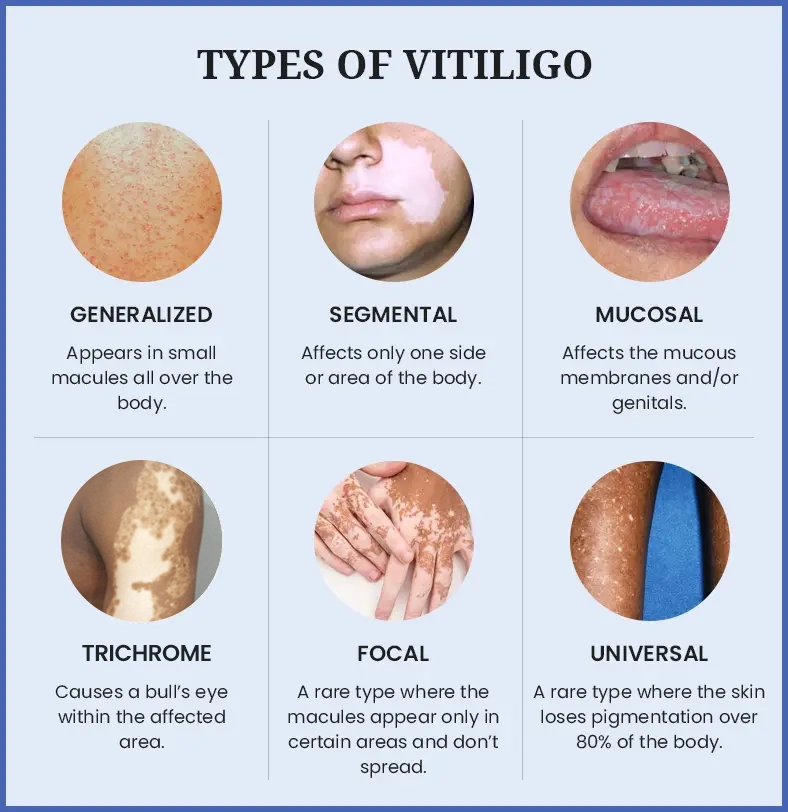Is vitiligo 100% curable?
No. As the underlying cause of vitiligo is still under study, there is no definite 100% cure currently known.
Which treatment is best for vitiligo?
The most effective vitiligo treatment in Delhi is phototherapy combined with other therapies including topical corticosteroids and calcineurin inhibitors. In severe cases, skin grafting and cell transplant surgery are recommended by a skin doctor.
Which blood test for vitiligo?
To confirm a diagnosis of vitiligo, rarely a vitiligo treatment doctor in Delhi may recommend a thyroid function test, one of the blood tests for checking the level of T3, T4, and TSH- the thyroid hormones. This test is done to check if the patient has another autoimmune disorder, a thyroid disorder.
What food is not good for vitiligo?
Vitiligo patients have some diet restrictions. They are recommended to avoid certain food items in their diets such as Vitamin C-rich fruits, red meat, fish, fermented foods, carbonated drinks, figs, and dates, and limit their intake of chocolates and milk and its products.
What age does vitiligo start?
Vitiligo can develop at any age, however, usually the white patches on the skin start appearing before the age of 20. Its onset can be in early childhood.
What is the first look of vitiligo?
Vitiligo first shows up on the skin as a pale skin patch that gradually grows whiter over time.
How to avoid vitiligo?
Vitiligo is a non-avoidable condition as its cause is not known. However, one can avoid the risk of developing vitiligo or its worsening by sun protecting the skin, avoiding stress or injury to the skin, treating autoimmune conditions, and taking proper care of the skin.
Which soap is good for vitiligo?
A moisturising soap or mild herbal soap is recommended for vitiligo patients. Ps-or-olin medicated soap is one of the best soaps for vitiligo. However, it's essential to consult with a vitiligo specialist in Delhi before using any specific soap.


















